Built for startups, trusted by enterprises.
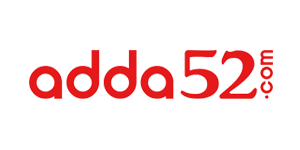
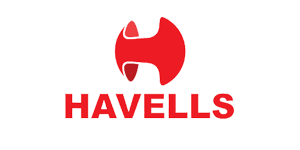
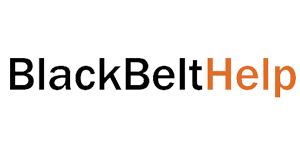
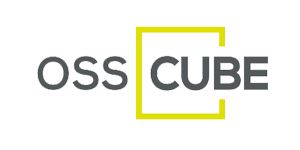
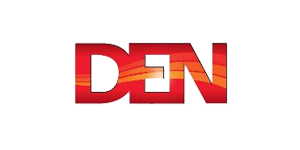
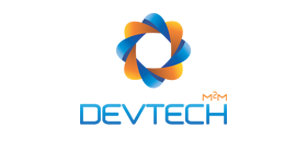
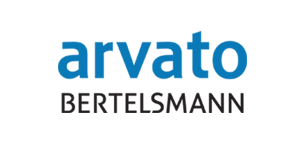
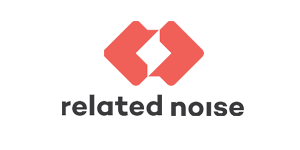
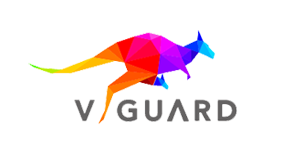
Your AI-powered HR genie: automate hire-to-retire workflows from onboarding & record-keeping
to leave, collaboration, Helpdesk, Appraisal, Training, Social & analytics.
The Employee Essentials module serves as the foundation of OrgGenie’s HR suite, providing a centralized hub for all critical employee lifecycle activities. At its heart lies Onboarding, which transforms the traditionally manual welcome process into a guided, automated journey. New hires receive personalized checklists, digital forms, policy acknowledgments, and resource links—all before their first day—ensuring they feel prepared and connected as soon as they walk through the door.
Once onboarded, Employee Records become living, secure profiles. Every detail—from personal information and emergency contacts to certifications and performance history—is stored in a single, easily searchable repository. This eliminates the need for multiple legacy spreadsheets and disparate systems, giving HR and managers real-time visibility into employee data.
When someone leaves the organization, the Exit feature seamlessly archives their records and triggers customizable offboarding workflows (return of assets, exit interviews, final settlements). The Directory component offers a dynamic org chart and search-driven people finder, fostering collaboration and social awareness across teams.
To cultivate a positive culture, Kudos and Milestones let colleagues recognize achievements and celebrate tenure or personal events. Each “shout-out” is broadcast through the Employee Connect feed, boosting morale and reinforcing organizational values. The Whistleblowing channel ensures confidentiality and compliance, empowering employees to report concerns safely. Finally, the Policy Repository provides version-controlled documents and automated acceptance tracking, reducing legal risk and ensuring adherence to company rules.
Together, these features make Employee Essentials both a tactical record-keeping system and a strategic culture-builder. Organizations that adopt this module report up to 40% faster onboarding cycles, 80% reduction in policy disputes, and measurable increases in employee engagement scores—all thanks to a seamless blend of automation and human-centric design.
In today’s dynamic workplace, flexibility isn’t a perk—it’s a necessity. The Employee Flexibility module empowers teams and managers to coordinate time away and remote work with unprecedented transparency and control. The Leave & WFH management interface is mobile-first, featuring a calendar-driven UX where employees can request paid time off, sick days, and remote work in just a few taps. Managers receive push and email notifications, can approve or reject with notes, and adjust schedules on behalf of direct reports.
All past requests are archived in the Leave/WFH history log, which employees and HR can filter by type, date range, or status. This historical data feeds into OrgGenie’s Flexibility Calendar, a department- and organization-wide view of headcount availability. HR can configure blackout dates, maximum concurrent leaves, and compliance windows to avoid staffing shortages or policy breaches.
Advanced features include adjustable accrual policies—prorated for tenure or role changes—and automatic balance calculations that factor in carry-over rules. The module also integrates with payroll, ensuring leave deductions and allowances are accurately reflected in compensation. For companies with global workforces, regional holiday calendars can be overlaid, preventing confusion and improving planning.
By blending self-service capabilities with robust managerial controls, Employee Flexibility reduces administrative overhead by up to 60% and boosts employee satisfaction by giving team members autonomy over their schedules. It unifies leave and remote-work workflows into one intuitive experience, supporting the modern shift toward distributed and hybrid work models.
OrgGenie’s Employee Connect module transforms the HR platform into a private social network designed specifically for work. At its core are Galleries and Popular Posts, visually rich spaces where announcements, event photos, and employee-generated content can gather likes and comments. This encourages organic engagement and highlights company swag, team victories, and personal milestones.
To gather feedback and opinions, Surveys let HR craft multi‑question forms—anonymous or attributed—and push them to targeted groups. Real-time response tracking and analytics dashboards surface sentiment trends, enabling leaders to take action before small issues escalate. Follow‑ups automate reminders to complete mandatory surveys or policy acknowledgments, boosting compliance and data completeness.
Follow mechanics allow colleagues to subscribe to specific discussion threads or people, ensuring that every announcement or conversation reaches its intended audience without overwhelming everyone. Notifications are throttled and configurable, giving employees control over what pings their inbox or mobile device.
Employee Connect bridges the gap between centralized HR functions and the social, collaborative experiences today’s workforce expects. Companies leveraging this module see 3× higher survey response rates, a 25% increase in cross-team interactions, and a 40% uplift in recognition activity—all of which correlate strongly with improved retention and culture metrics.
Communication is the lifeblood of any organization, and the Employee Collaborate module brings chat-based interactions directly into the HRMS. Teams can engage through 1:1 and group chat, attach files, and mention colleagues to spark threaded discussions. The module also supports Corporate Announcements, which broadcast top‑priority messages to all employees with read receipts and follow‑up nudges for those who haven’t seen them.
Polls and Discussion Boards facilitate asynchronous brainstorming, ideation, and decision-making. Managers can gauge team sentiment, prioritize feature lists, or decide on office party themes with a quick poll. Discussion boards archive longer-form threads and Q&A sessions, ensuring knowledge is captured and searchable.
In emergencies or time‑sensitive scenarios, admins can trigger urgent alerts that bypass typical notification settings, ensuring everyone sees critical updates. All chat logs, announcements, and boards feed into the Analytics module, where keyword trends and participation metrics inform leadership about engagement levels and communication gaps.
By centralizing workplace communication inside OrgGenie, companies eliminate the need for external chat tools and avoid context-switching. Organizations report a 50% reduction in email volume and a 30% acceleration in decision turnaround, driven by faster collaboration and better traceability of conversations.
The Employee Self-Service (ESS) module empowers employees to resolve common requests without HR intervention. A built-in Service Desk handles ticket submission, routing, and SLA tracking. Employees can view statuses, add comments, and close tickets once resolved. Approval Workflows support multi-level sign-offs for expenses, policy changes, or resource requests, while Case Observers allow managers or stakeholders to monitor progress without being active participants.
The ESS portal also includes a searchable Knowledge Base of FAQs and how-to articles. When submitting a ticket, suggested articles appear based on keywords, reducing ticket volume by preemptively solving simple questions. Configurable SLAs automatically escalate overdue cases, and detailed dashboards give HR and support teams full visibility into case aging, resolution times, and backlog.
Integrations with core HR modules mean that ESS can trigger actions like updating personal information or downloading payslips directly, all within a unified interface. Mobile push notifications keep employees informed of status changes, so they’re never left wondering when their request will be completed.
By shifting routine inquiries from HR teams to self‑service workflows, organizations see up to a 70% drop in inbound requests and a 50% improvement in resolution speed—freeing HR to focus on strategic initiatives rather than transactional tasks.
The Employee Payroll module automates end‑to‑end payroll processing, from salary calculations and deductions to tax declarations and benefits disbursement. Core features include configurable pay schedules, multi‑jurisdiction tax rules, and integrated statutory compliance for global operations.
A streamlined Payslip Generator produces digital payslips that employees can access via the mobile app or ESS portal. Automated reminders prompt payroll admins to review thresholds, approve final runs, and address anomalies flagged by built‑in validation rules.
Benefits Management tracks health insurance, retirement plans, and other perks. Employees can enroll in open enrollment periods, view plan documents, and estimate take‑home pay based on selected benefits. Additionally, tax‑declaration workflows simplify end‑of‑year processes with e-filing integrations in supported regions.
Real‑time analytics dashboards highlight cost centers, variance analyses, and headcount projections. Drill‑down capabilities let finance teams reconcile accounts to general ledgers, export journal entries, and generate audit-ready reports.
By automating repetitive tasks and ensuring airtight compliance, OrgGenie Payroll reduces processing time by 80%, eliminates manual errors, and provides a secure, audit‑friendly environment for handling sensitive compensation data.
Hiring is only as fast as your tools allow, and the Employee Acquisition module accelerates every step of recruitment. A built‑in ATS centralizes job postings, candidate profiles, and interview feedback. Customizable Recruitment Workflows guide candidates through staged approval gates—from initial screening and tests to final offers.
Referral Management incentivizes employees to recommend talent by tracking referrals, offering rewards, and integrating with communication channels for seamless sharing. Channel Analytics reveal the most effective sourcing channels, empowering recruiters to optimize ad spend and focus on high‑yield pipelines.
Collaborative features include shared Interview Scorecards and Panel Scheduling. Interviewers can rank candidates against role-specific rubrics, while integrated calendars automatically find common availability, reducing scheduling friction.
Once a candidate is hired, data flows directly into the Employee Essentials onboarding workflows, ensuring a frictionless transition. Diversity & Inclusion dashboards surface key metrics—gender split, minority representation, and unbiased screening recommendations—helping organizations meet their DEI goals.
Recruiters using this module see a 40% reduction in time‑to‑hire and a 25% increase in offer acceptance rates, driven by streamlined processes and data‑driven decision-making.
Performance management doesn’t have to be a once‑a‑year headache. OrgGenie’s Employee Performance module offers Self and Manager Appraisals with continuous check‑ins, goal tracking, and real‑time feedback loops. Employees set SMART goals and update progress; managers provide coaching notes and mid‑cycle reviews.
A historical Appraisal History view ensures context is preserved across cycles, making calibration sessions more transparent and equitable. Custom scorecards, weighted competencies, and multi‑rater feedback support nuanced evaluations. Automated nudges ensure reviews happen on schedule, while calibration workflows align scores across teams to reduce bias.
Development Plans let managers create personalized growth paths with milestones, learning resources (tied to the Employee Training module), and skill assessments. By linking performance outcomes to learning opportunities and career aspirations, OrgGenie fosters a growth-oriented culture.
Organizations report a 30% increase in review completion rates and a measurable uptick in employee engagement when adopting continuous performance methodologies—transforming performance from an annual ritual into an ongoing dialogue.
Bridging the gap between HR and project execution, the Employee Productivity module offers Timesheets, Project & Task Management, and Automated Reminders. Team members log hours against projects; managers review and approve with a single click.
Task Management integrates Kanban boards, due-date calendars, and dependency tracking. Employees see clear priorities, while managers get real‑time workload visualizations. Automated reminders and email nudges ensure deadlines aren’t missed.
Integration with billing systems and client-facing reports makes it easy to convert timesheets into invoices or internal chargebacks. Productivity analytics surface utilization rates, project burn‑down charts, and resource forecasts, enabling data-driven planning and capacity management.
By unifying time tracking and task management within an HRMS, companies reduce tool fragmentation and gain insights into how workforce capacity aligns with strategic initiatives—boosting productivity by up to 20%.
Lifelong learning is critical in a fast-paced world, and the Employee Training module brings scalable L&D directly into OrgGenie. Self‑paced e-learning courses support videos, SCORM packages, and quizzes, while Instructor‑led Sessions can be scheduled, tracked, and evaluated.
A Training Calendar displays upcoming courses, enrollment windows, and completion deadlines. Managers receive alerts when direct reports fall behind or require recertification. Learning Paths bundle related courses into curated curricula, guiding employees through role-based or skill-based tracks.
Post‑training surveys capture feedback and assessment scores, feeding into the Analytics module to evaluate program effectiveness and ROI. Certification records are stored in the employee profile, ensuring compliance with industry standards.
Organizations leveraging OrgGenie Training report a 50% increase in course completion rates and a 35% improvement in skill-assessment scores, demonstrating the power of integrated, adaptive learning experiences.
 No Credit Card Required For Free Trail.
No Credit Card Required For Free Trail.